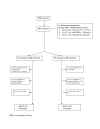Therapeutic efficacy of sulphadoxine-pyrimethamine and chloroquine for the treatment of uncomplicated malaria in pregnancy in Burkina Faso
- PMID: 16776817
- PMCID: PMC1533839
- DOI: 10.1186/1475-2875-5-49
Therapeutic efficacy of sulphadoxine-pyrimethamine and chloroquine for the treatment of uncomplicated malaria in pregnancy in Burkina Faso
Abstract
Background: A reduction in the therapeutic efficacy of chloroquine (CQ) and sulphadoxine-pyrimethamine (SP) has recently been observed in Burkina Faso. As these two drugs are used in pregnancy, their efficacy in pregnant women was studied to directly assess the level of drug resistance in this specific population, rather than to extrapolate results of studies conducted in children < 5 years of age.
Methods: During the malaria transmission season of 2003 in Ouagadougou, the clinical efficacy of SP and CQ, using the WHO 28-day protocol, was assessed in primigravidae and secundigravidae presenting with uncomplicated malaria.
Results: PCR-corrected results by day 28 showed that among 62 women treated with SP, eight (12.9%) experienced late parasitological failure, but no clinical failures. Among 60 women treated with CQ, the overall failure rate was 46.7% including 1.7% early treatment failures, 5% late clinical failures and 40% late parasitological failures. SP induced a haemoglobin gain of 0.3 g/dL by day 14 and 0.9 g/dL by day 28. Treatment responses were independent of gravidity, gestational age and prior antenatal care visits.
Conclusion: While CQ should no longer be used, the efficacy of SP is still compatible with use for intermittent preventive treatment (IPT) in pregnancy. However, given the possible spread of resistance, the drug should be restricted in its use.
Figures
Similar articles
-
Chloroquine and sulphadoxine-pyrimethamine efficacy for uncomplicated malaria treatment and haematological recovery in children in Bobo-Dioulasso, Burkina Faso during a 3-year period 1998-2000.Trop Med Int Health. 2002 Nov;7(11):925-30. doi: 10.1046/j.1365-3156.2002.00952.x. Trop Med Int Health. 2002. PMID: 12390597 Clinical Trial.
-
Comparison of the therapeutic efficacy of chloroquine and sulphadoxine-pyremethamine in children and pregnant women.Trop Med Int Health. 2007 Nov;12(11):1288-97. doi: 10.1111/j.1365-3156.2007.01927.x. Epub 2007 Oct 22. Trop Med Int Health. 2007. PMID: 17949398 Clinical Trial.
-
Efficacy, safety, and tolerability of amodiaquine plus sulphadoxine-pyrimethamine used alone or in combination for malaria treatment in pregnancy: a randomised trial.Lancet. 2006 Oct 14;368(9544):1349-56. doi: 10.1016/S0140-6736(06)69559-7. Lancet. 2006. PMID: 17046467 Clinical Trial.
-
Therapeutic efficacy of chloroquine plus sulphadoxine/ pyrimethamine compared with monotherapy with either chloroquine or sulphadoxine/pyrimethamine in uncomplicated Plasmodium falciparum malaria in Laos.Trop Med Int Health. 2003 Jan;8(1):19-24. doi: 10.1046/j.1365-3156.2003.00977.x. Trop Med Int Health. 2003. PMID: 12535245 Clinical Trial.
-
Evaluation of chloroquine (CQ) and sulphadoxine/pyrimethamine (SP) therapy in uncomplicated falciparum malaria in Indo-Myanmar border areas.Trop Med Int Health. 2005 May;10(5):478-83. doi: 10.1111/j.1365-3156.2005.01401.x. Trop Med Int Health. 2005. PMID: 15860095
Cited by
-
Placental malaria and low birth weight in pregnant women living in a rural area of Burkina Faso following the use of three preventive treatment regimens.Malar J. 2009 Oct 7;8:224. doi: 10.1186/1475-2875-8-224. Malar J. 2009. PMID: 19811649 Free PMC article. Clinical Trial.
-
Drugs for treating uncomplicated malaria in pregnant women.Cochrane Database Syst Rev. 2008 Oct 8;2008(4):CD004912. doi: 10.1002/14651858.CD004912.pub3. Cochrane Database Syst Rev. 2008. PMID: 18843672 Free PMC article.
-
Parasite clearance following treatment with sulphadoxine-pyrimethamine for intermittent preventive treatment in Burkina-Faso and Mali: 42-day in vivo follow-up study.Malar J. 2014 Jan 31;13:41. doi: 10.1186/1475-2875-13-41. Malar J. 2014. PMID: 24484467 Free PMC article.
-
Factors associated with risk of malaria infection among pregnant women in Lagos, Nigeria.Infect Dis Poverty. 2013 Aug 30;2(1):19. doi: 10.1186/2049-9957-2-19. Infect Dis Poverty. 2013. PMID: 24001135 Free PMC article.
-
A community effectiveness trial of strategies promoting intermittent preventive treatment with sulphadoxine-pyrimethamine in pregnant women in rural Burkina Faso.Malar J. 2008 Sep 18;7:180. doi: 10.1186/1475-2875-7-180. Malar J. 2008. PMID: 18801158 Free PMC article. Clinical Trial.
References
-
- World Health Organization . A Strategic Framework for Malaria Prevention and Control During Pregnancy in the African Region. Brazzaville: WHO Regional Office for Africa; 2004. AFR/MAL/04/01.
-
- Brabin BJ. Applied Field Research in Malaria reports, no 1. Geneva, Switzerland. World Health Organization; 1991. The risks and severity of malaria in pregnant women. (TDR/FIELDMAL/1)
-
- McGregor IA. Epidemiology of malaria and pregnancy. Am J Trop Med Hyg. 1984;33:517–525. - PubMed
Publication types
MeSH terms
Substances
LinkOut - more resources
Full Text Sources
Research Materials


